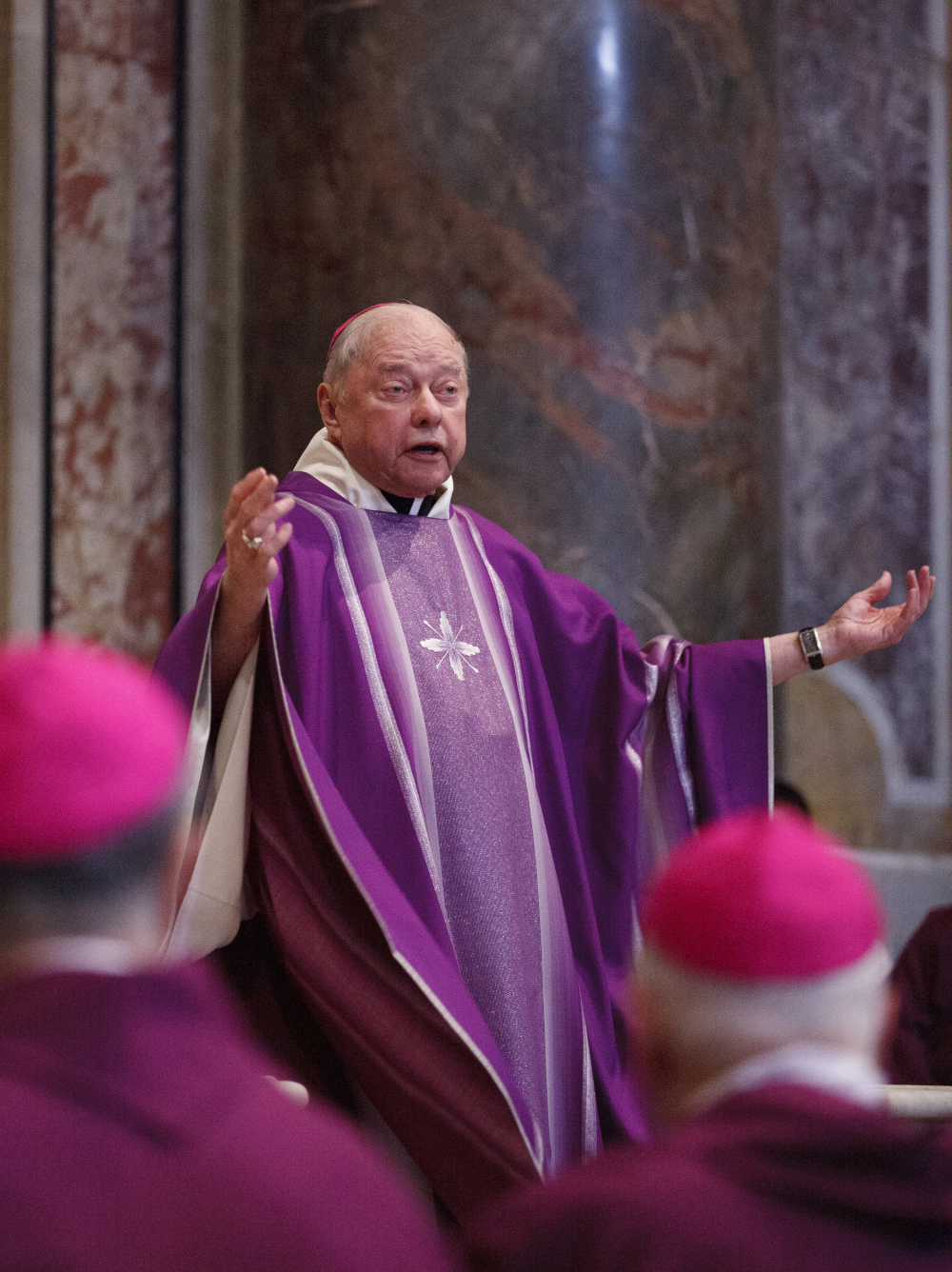
Retired Bishop John Kinney of St. Cloud, Minn., died at age 82 Sept. 27, 2019, at Quiet Oaks Hospice in St. Augusta. Bishop Kinney is pictured concelebrating Mass at the Vatican March 6, 2019. (CNS/Paul Haring)
Retired Bishop John Kinney of St. Cloud died Sept. 27 at Quiet Oaks Hospice in St. Augusta. He was 82.
The bishop's body will be received at the Cathedral of St. Mary in St. Cloud the afternoon of Oct. 4 followed by a private family visitation, then public visitation and a vigil service.
On Oct. 5, there will be a period of public visitation followed by his funeral Mass, with Archbishop Bernard Hebda of St. Paul and Minneapolis presiding. Burial will be at Assumption Cemetery in St. Cloud.
Kinney headed the Diocese of St. Cloud from 1995 until his retirement in 2013. An ardent supporter of Catholic social teaching, marriage, youth and collaborative ministry, he strove to lead in the spirit of the diocese's mission statement: to be Christ's "heart of mercy, voice of hope and hands of justice."
"Bishop Kinney was a kind and gracious pastoral leader," said Bishop Donald Kettler, who succeeded Kinney in St. Cloud in 2013. "He was a strong defender of the dignity of every human being, and his love for the church was evident both in his public ministry and personal life. May our Father in heaven now receive him warmly into his arms."
Kinney was born June 11, 1937, in Oelwein, Iowa, to John and Marie (McCarty) Kinney. His only brother, Bernard, was eight years older.
He graduated from DeLaSalle High School in Minneapolis and held a bachelor's degree from St. Paul Seminary in St. Paul and a doctorate in canon law from Pontifical Lateran University in Rome.
He was ordained to the priesthood Feb. 2, 1963, at the Cathedral of St. Paul in St. Paul by Archbishop Leo Binz. Kinney served in several positions in the Archdiocese of St. Paul and Minneapolis, including nine years as chancellor. On Nov. 16, 1976, St. Paul VI named him an auxiliary bishop of the archdiocese. Archbishop John Roach of St. Paul and Minneapolis ordained him a bishop Jan. 25, 1977. Kinney served as auxiliary bishop from 1977 to 1982.
Advertisement
On June 28, 1982, St. John Paul II named him the bishop of Bismarck, North Dakota. He was installed Aug. 23, 1982. On May 9, 1995, the pope named him the eighth bishop of St. Cloud. He was installed July 6, 1995.
While serving as bishop in Bismarck and St. Cloud, Kinney wrote six pastoral letters on liturgy, youth, AIDS, the sacrament of penance, marriage and social justice.
In 1993, the then-National Conference of Catholic Bishops appointed him to chair an Ad Hoc Committee on Sexual Abuse. During his tenure as chair, the ad hoc committee published "Restoring Trust," a document then used by dioceses to address sexual abuse in the Catholic Church.
Following revelations of clergy sexual abuse around the country, Kinney set up listening and information sessions that he personally attended in parishes around the diocese. He used the sessions to understand the pain and concern of people in the diocese and to open doors for dialogue and healing.
Committed to the global church, Kinney served on Catholic Relief Services' board of directors from 1993 to 1998. CRS is the U.S. bishops' overseas relief and development agency.
Kinney helped the Bismarck Diocese establish a mission in Kenya. With Father Bill Vos, St. Cloud diocesan director of CRS, he initiated the partnership between the St. Cloud Diocese and Homa Bay Diocese in Kenya in 1999. The diocesan relationship with Maracay, Venezuela, was established in 1963 and became a Global Solidarity Partnership under Kinney's leadership.
Kinney visited Homa Bay and Maracay. He made trips to other areas of close relationship and connection to the Diocese of St. Cloud, including to the Diocese of Agats, Indonesia, where the Crosiers ministered, and to South Sudan during and after the years of war to visit Bishop Paride Taban and other Southern Sudanese bishops. Other travels took him to Angola, Cambodia, Tanzania, Thailand, Vietnam and Zanzibar.
Pope Francis accepted Kinney's retirement upon Kettler's installation. During his retirement, he lived at the Speltz House in Sauk Rapids and remained an avid reader.



